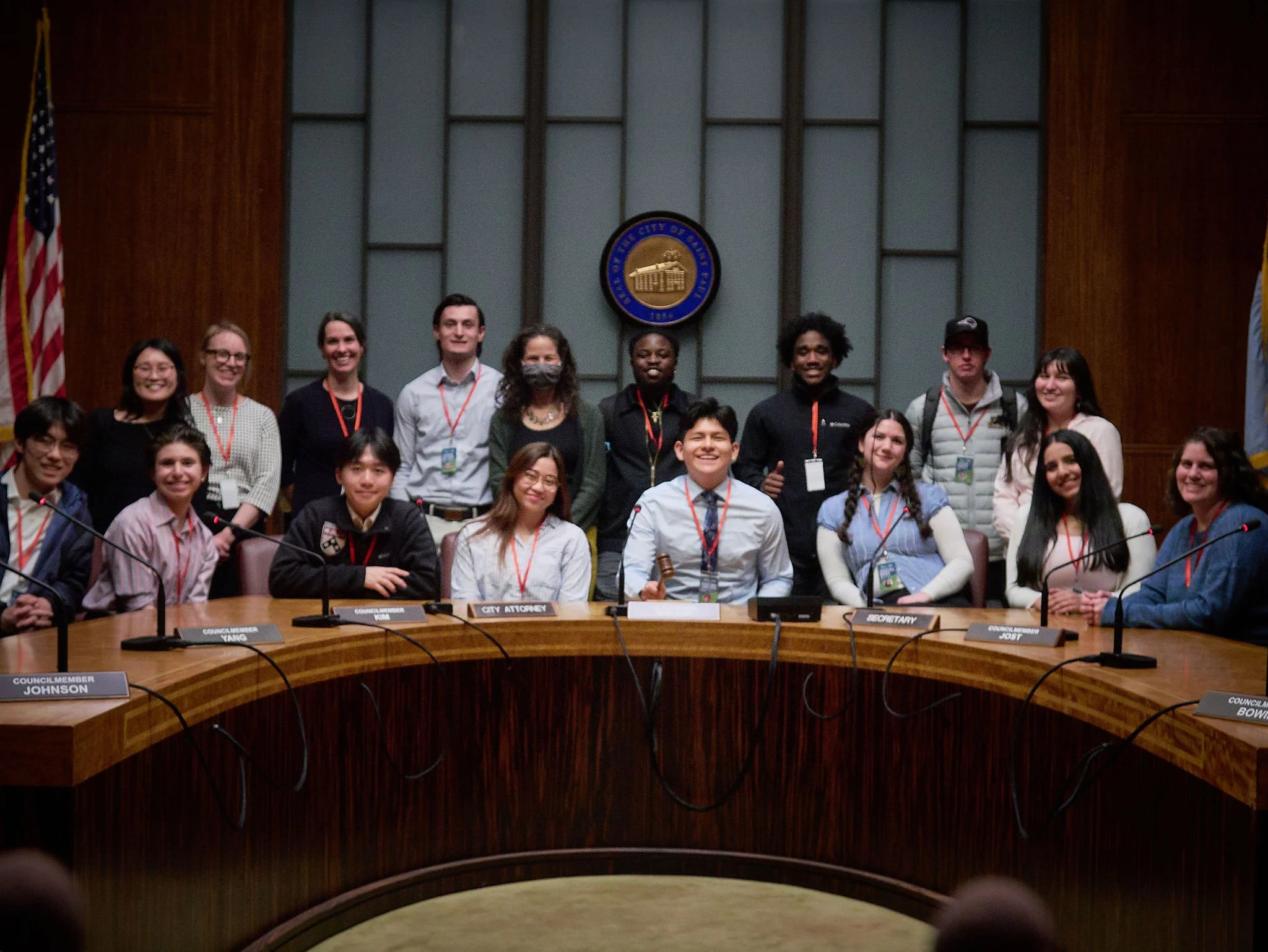Spring Break Campus Bridging Initiative, Day Three
On Wednesday we had the honor and privilege of getting a tour of the Minnesota State Capitol building. The idyllic architecture from the mid-late 1800s showcases the inner beauty and workings of the processes that shape the lives of millions of people. Starting in the senate building, we sat in on a very important committee hearing on K-12 policy, proposing that school districts have discretion on whether the school year may start before Labor Day (something that was previously prohibited under MN State Law). The passion in the members despite it being early in the day was infectious, it allowed us to see that politicians are not necessarily blank- faced and don’t care about what people think.
However, what some people do for a living is try to please politicians. Following the committee we spoke with a couple of lobbyists. We learned about the inner workings of their job and what it means to them to be a lobbyist, how they got into their profession, common misconceptions, along with some of the behind the scenes conversations and studying that is needed to communicate well with people. This experience allowed us as Bridgers to get a perspective from a better understanding and highly knowledgeable source that can tell us firsthand accounts of what makes good policy.
Following this, we had some down time. We decided to take this time to walk around and explore the capitol and the rotunda. The painted blue dome representing the sea of our 10,000 lakes speaks true to all native Minnesotans. Surrounding this were murals representing the four seasons. One for summer, autumn, fall, and winter. Highlighting the natural beauty of this state and the impact it plays in our day to day lives.
Our last activity at the Capitol was speaking to a Committee Administrator (CA) for the Senate Tax Committee. He was able to talk to us about what we do as bridgers, what the program is, what it has to offer, and how it plays a role in St. Paul on the hill. He then went on to take questions from us. This meant a lot to me specifically, as a constituent it was great to see that someone who has known me for less than 10 minutes, took the time to learn more about us and our organization. Then took our questions. We asked him about what he does on the Tax Committee and how he got into this role. He detailed the opportunities that he had when he was younger working for other staff members and now as a CA he is able to work directly with members of his personal staff, but also with the staff and members of the Senate.
Lastly, we ended our day with walking down to St. Paul City Hall to learn and listen about how civics plays a role on a more local level. Walking into the building, the dark architecture was reinforced with the gold ceiling and the metallic shine that echoed throughout the building. The helpful staff helped us find our way to the meeting. The part that stood out to me most was how the members of city council took time to thoroughly listen to every single resident’s claims and statements they wanted to make. No matter how mundane they seemed, the members asked questions, stepped in for clarification, and questioned for background on the group. They took the time to understand where each group was coming from. This was similar to the experience we had in the committee meeting we saw in the Senate Building a couple blocks away. However, this contrasted from the capitol from the sense of community that these members felt. Even though they are seemingly just on city council. They feel a deep, personal connection to their city and their constituents. Following the meeting, they took time to speak with us directly, we all had a chance to introduce ourselves, ask questions, and learn more about what brought them to public service and what this means for us in the future. They gave us guidance, tips, and tools to succeed in a civic environment.
In conclusion, this experience allowed us as bridgers to learn more about the different levels of community organizing. Seeing the differences between local vs state allowed us to understand where we desire to fit in on this spectrum and where we feel comfortable making a difference in our community.




